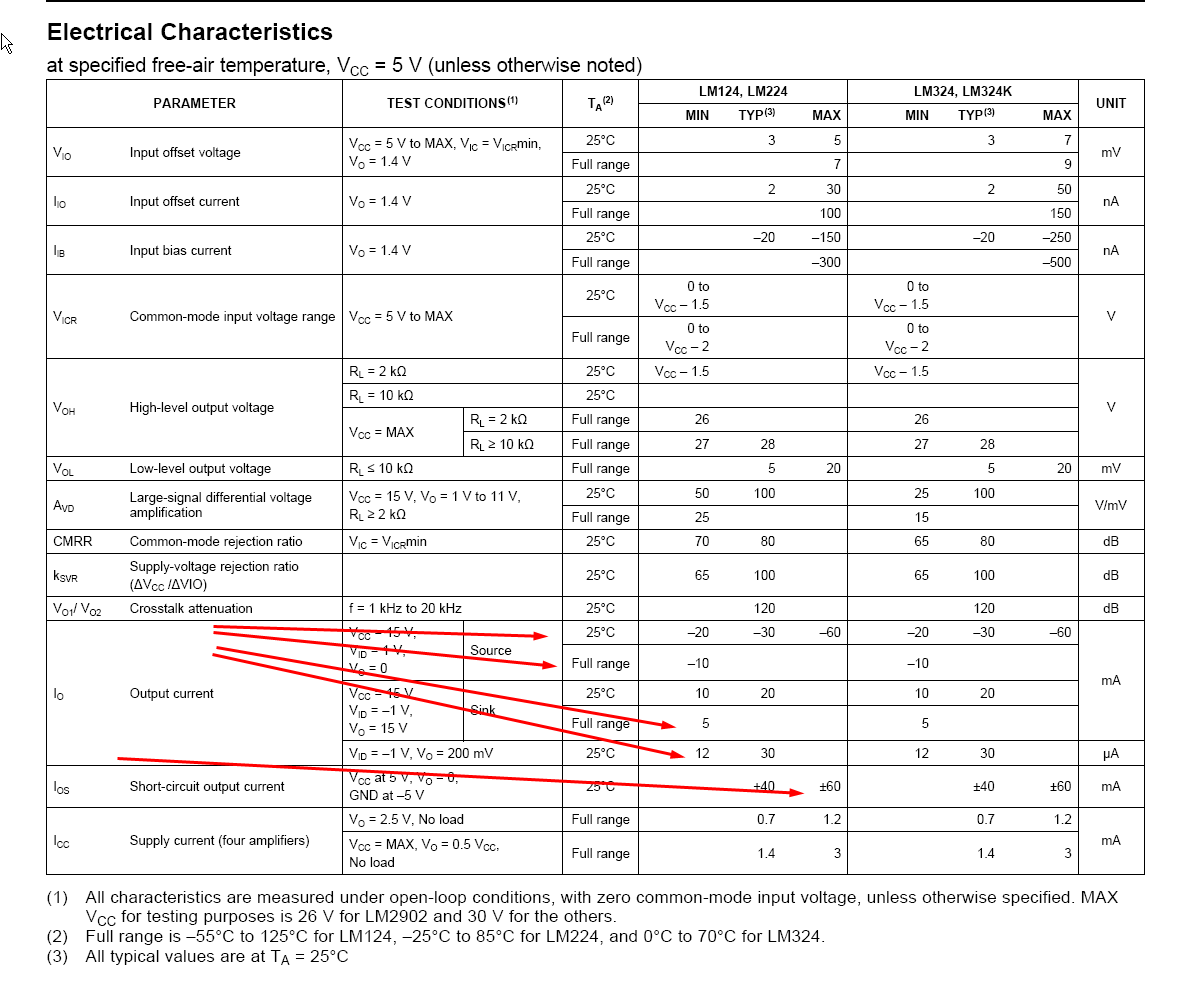Usually we're concerned with how much loading can be put on the output and still have it function properly. The output swing specification will be at a specific load resistance, usually load is between the output and ground on both dual and single-supply op-amps. For example, the dual-supply OP-07:

You can see that over the whole temperature range with +/-15 supplies it is guaranteed to have a swing of +/-11V with a 2K load, meaning that it can supply +/-5.5mA. If the supplies are different then the current may be different.
If you're primarily interested in short-circuit maximum current, that is not always specified, though some op-amps do have numbers. For example, the ubiquitous LM324:

As you can see, it guarantees (at 25°C) the output short circuit current won't exceed 60mA, but it's only guaranteed to source or sink 5 or 10mA. Also note that the LM324 has a (nominal) 50uA current sink on the output so if you ask it to sink more than some tens of uA the output will no longer get that close to the negative rail. If the load is a resistor to the negative rail, the issue does not arise.
In general the minimum guaranteed current (for it to work properly) is going to be much smaller than the maximum guaranteed short-circuit current (if they even give a number for the latter).




